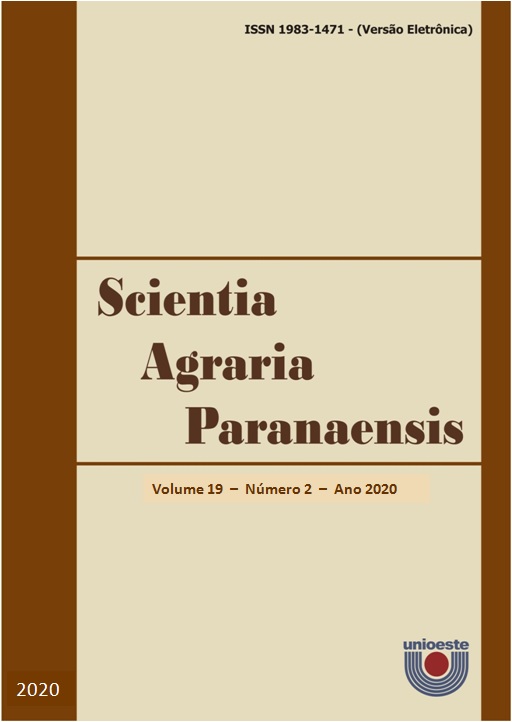Silvopastoral system compared to other conventional production systems in the Maranhão State Cerrado
DOI:
https://doi.org/10.18188/sap.v19i2.22215
Agências de fomento
Resumo
Silvipastoral systems are identified as options for land use due to the high potential they offer to increase the level of income from agronomic, social, economic, and ecological aspects. Given the above, this study aimed to evaluate the environmental benefits of implementing a silvopastoral system in Cerrado Maranhense, in comparison to other conventional production systems. The same was done in 2013 from February to May on a private property located in São Francisco do Brejão (MA) during the rainy season. The experiment evaluated three types of system: a) silvopastoral, composed of leucaena, grasses, and beef cattle, b) rotational system, and c) extensive system. A randomized block design in a 3x3 factorial scheme with three replications was used. Three pasture management systems (silvopastoral system, rotational system with native regeneration and extensive system) and three evaluation times (08:00 h, 12:00 h, and 16:00 h) were evaluated. After sample collection, dry biomass was determined. In the evaluation of ecophysiological parameters, the photochemical efficiency and estimate of the relative chlorophyll content in brachiaria plants of the three systems were determined. The photochemical efficiency was determined in the grasses of each system, being randomly evaluated three leaves per plant. The silvopastoral system was the one that showed the greatest increase in dry biomass of forage and the best results for the photochemical parameters, standing out as the best system for livestock.Downloads
Publicado
16-07-2020
Como Citar
SILVA, E. C. da; LEONEL, L. V.; REIS, F. de O.; CATUNDA, P. H. A.; SILVA, L. S. da; MENECHINI, W. Silvopastoral system compared to other conventional production systems in the Maranhão State Cerrado. Scientia Agraria Paranaensis, [S. l.], v. 19, n. 2, p. 175–179, 2020. DOI: 10.18188/sap.v19i2.22215. Disponível em: https://saber.unioeste.br/index.php/scientiaagraria/article/view/22215. Acesso em: 24 dez. 2025.
Edição
Seção
Artigos Científicos
Licença
Aviso de Direito Autoral Creative Commons
Política para Periódicos de Acesso Livre
Autores que publicam nesta revista concordam com os seguintes termos:
1. Autores mantém os direitos autorais e concedem à revista o direito de primeira publicação, com o trabalho simultaneamente licenciado sob a Licença Creative Commons Attribution que permite o compartilhamento do trabalho com reconhecimento da autoria e publicação inicial nesta revista.2. Autores têm autorização para assumir contratos adicionais separadamente, para distribuição não-exclusiva da versão do trabalho publicada nesta revista (ex.: publicar em repositório institucional ou como capítulo de livro), com reconhecimento de autoria e publicação inicial nesta revista.
3. Autores têm permissão e são estimulados a publicar e distribuir seu trabalho online (ex.: em repositórios institucionais ou na sua página pessoal) a qualquer ponto antes ou durante o processo editorial, já que isso pode gerar alterações produtivas, bem como aumentar o impacto e a citação do trabalho publicado (Veja O Efeito do Acesso Livre).
Licença Creative Commons
Esta obra está licenciada com uma Licença Creative Commons Atribuição-NãoComercial-CompartilhaIgual 4.0 Internacional, o que permite compartilhar, copiar, distribuir, exibir, reproduzir, a totalidade ou partes desde que não tenha objetivo comercial e sejam citados os autores e a fonte.


